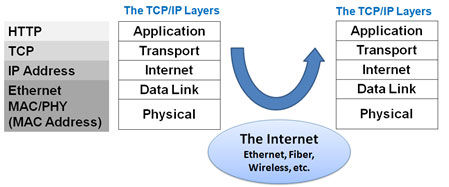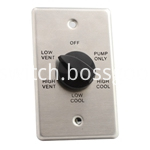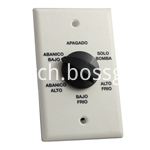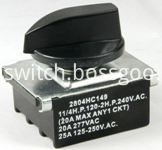Meng He
ABI Research pointed out that currently there are more than 10 billion wireless connection devices on the market, and by 2020 the number of wireless devices connected to the Internet of Things (IoE) will exceed 30 billion. As the Internet of Things gains more and more attention from people, many OEMs have found themselves facing increasing pressure. They must provide Internet connectivity for various products in order to benefit from the ability to communicate between devices. However, many developers are not familiar with how to implement a highly robust TCP/IP protocol stack. This article will discuss the major issues related to supporting Internet connectivity in embedded systems and how new tools can be used to help developers provide TCP/IP to the system without worrying about low-level implementation details.
First, let us briefly review the TCP/IP protocol. Transmission Control Protocol/Internet Protocol (TCP/IP) is a common language for exchanging data between hardware devices connected to the Internet. These rules govern the exchange mechanism between terminal operating systems (Windows, iOS, Linux, etc.) and a series of specific protocols such as SMTP, FTP, and HTTP.
TCP/IP is subdivided into different "layers" (see Figure 1 for details). Internet data is routed from the application layer to the transport layer in the format of data fragments. The physical layer is where the data is physically transmitted via the "Internet" under the Ethernet protocol defined by the IEEE 802.3 specification. Ethernet has a number of different specification versions that provide a variety of maximum bit rates, transmission modes, and transmission media (optical, coaxial, etc.). Medium access control (MAC) is a very important part of the physical layer. MAC addresses represent the physical addresses of nodes on an Ethernet network. Each Ethernet frame contains a source address and a destination address.

Figure 1. Data transmission over the Internet
The application layer is responsible for providing the user interface. The following are common application layer protocols.
1. Hypertext Transfer Protocol (HTTP): Transmits data related to browsing the World Wide Web (WWW).
2. Simple Mail Transfer Protocol (SMTP): Supports email transmissions across the Internet.
3. File Transfer Protocol (FTP): Used to transfer files over the Internet.
4. Domain Name System (DNS): Translate domain names.
5. Dynamic Host Configuration Protocol (DHCP): Dynamically assigns an IP address to a specific node.
6.Telnet: Create an interactive TCP connection for the node.
7. Simple Network Time Protocol (SNTP): Supports synchronization between the node clock and the reference clock.
8. Simple Network Management Protocol (SNMP): Used to monitor the network connection equipment and check whether there is a problem that requires intervention.
The two most common uses of the embedded TCP/IP stack are messaging and Web page display. For example, a simple SMTP messaging system allows a microcontroller to obtain sensor readings and send the readings as messages or e-mails to a central repository for recording and analysis at pre-set intervals. The home can use this application to send room-temperature e-mails to residents every hour. Of course, we can further expand this use case. The embedded microcontroller can not only read the temperature information, but also can monitor whether the doors and windows are locked and the lights are turned off. These systems can monitor relevant information around the clock. If the occupant is going to work late until he comes home, he/she can use the HTTP request microcontroller to send a web page containing all relevant information. The occupants can then turn on some room lights, raise the temperature, and perform other tasks by changing some fields on the web page.
There are many different ways to implement an Ethernet subsystem that meets the requirements of each system:
Ethernet controller module
Controller modules containing TCP/IP hardwired chips, transformers, and RJ45 can greatly simplify the connectivity features provided. A complete vendor ecosystem can provide a variety of off-the-shelf modules that not only speed time-to-market but also provide attractive price points. This solution is ideal for engineers who want to quickly develop Internet systems. With the increasing popularity of the Arduino platform, many modules that are compatible with the official Arduino development board are also appearing on the market.
TCP/IP IC plus an MCU
In addition, designers can connect TCP/IP controllers to their embedded microcontrollers. These modules typically use a stand-alone Ethernet controller IC that has many features that can handle most of the network protocol requirements. This infrastructure can help designers build and share their own Ethernet projects. At the hardware level, we only need an RJ45 connector, magnetics, a 25 MHz crystal or oscillator, and some passive components.
Single-chip microcontroller supporting lwIP
Lightweight IP (lwIP) is a widely used open source TCP/IP protocol stack that has been specifically designed for embedded systems and has been supported by a global developer network. For many applications, lwIP provides Ethernet functionality while significantly reducing MCU resource usage. The MCU implements the protocol stack physically requiring MAC and PHY. lwIP is an ideal choice for designers who want to implement low-cost connectivity. However, since this is more like a DIY type of implementation, developers must also be willing to make efforts to solve the problem of the protocol stack. The challenge for this implementation is the use of system resources and the ability to dynamically allocate MAC addresses. PSoC's dynamic reconfigurable properties make it possible to solve the above challenges. The digital side of PSoC consists of Universal Digital Blocks (UDBs) that can be used to balance the configuration granularity and support efficient implementation. The basis of this method is to be able to customize the digital operation of the device to meet the application requirements. For example, on-chip DMA allows us to design configurable RX and TX FIFOs. PSoC Design Environment PSoC Creator allows developers to build their own Ethernet components and use them as virtual chips in system-level designs.
Connectivity functions represent future needs, and the world is increasingly relying on the Internet to promote and expand communications. As chip vendors launch mature products with more implementation options and greater flexibility, designers can make purchase choices from ready-to-use turnkey modules to DIY embedded solutions at the required level.
Kara offers a range of Rotary Switches.Ranging from 5 to 9 poles,15VA to 25 amp,with many choices of functions,especially the switches with High-Current .Certifications include CSA, CE, and more.
This item used very in the line of cooler,with metal panel or plastic panel or only switch are all available.



Rotary Switch,Rotary Switch Knobs,Rotary Switch 6 Position,Mini Rotary Switch
Ningbo Kara Electronic Co.,Ltd. , https://www.kara-switch.com